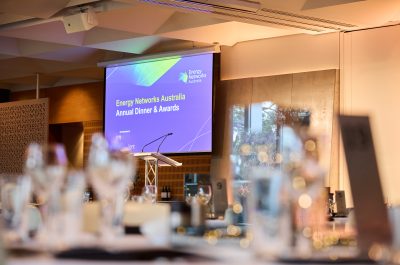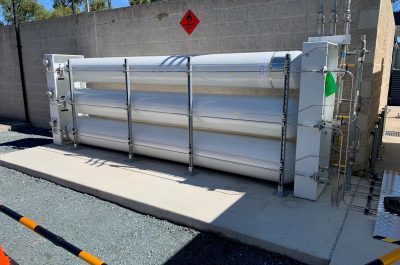Harnessing every tool in the toolbox: a local pathway to a sustainable future
The urgency to address climate change has never been more pressing. COP29, the latest global climate summit held this month in Azerbaijan, underscored the importance of continued decisive action. As nations grapple with the increasing intensity of climate impacts, the role of energy networks in facilitating a sustainable energy future becomes ever more critical.
To meet our climate targets, we must employ every tool in our toolbox. If we imagine a box filled with a variety of tools, each is designed for a specific purpose. Some tools are large and powerful, capable of tackling major tasks. Others are smaller and more precise, ideal for intricate work.
Similarly, the energy landscape is composed of a diverse range of tools, capable of contributing in a variety of ways to help us meet our emissions targets, from large-scale power plants and transmission to smaller-scale local grids.
Large-scale energy: the power tools section
It’s clear that Australia is already working hard to deliver the large-scale renewable generation projects and transmission infrastructure that we need to transform the grid, and we must not lose focus on that.
Transmission interconnection is a power tool. It moves large amounts of energy between regions and is valuable for several reasons:
- Firstly, it means that when energy can be more cheaply produced in one region, it can be shared with the other region, reducing the wholesale price of electricity. It’s like having a cheaper generator available to borrow from a neighbour, all the time.
- Secondly, it means that new renewable energy can be connected into that transmission infrastructure, which also adds to energy supply, increases energy diversity and also reduces wholesale electricity prices.
- Lastly, it provides a more resilient energy system, with more strongly interconnected regions able to withstand a broader range of potential events (natural disasters impacting power lines or generators, droughts impacting hydro, etc.). Essentially, you’ve got more options to deal with uncertain future events.
Small-scale: the energy multitool
While we continue to focus on delivering new transmission, we also need to make sure that the potential of local grids – the versatile multitool of the energy sector that offers a flexible and adaptable approach to energy generation and distribution – isn’t overlooked.
By harnessing the power of consumer energy resources (CER) such as rooftop solar, battery storage, and electric vehicles, local grids can offer a sustainable, resilient, and equitable energy future.
Imagine a future where neighbourhoods are powered by clean, renewable energy generated locally. This is less a pipedream and more a reality that’s increasingly within reach – it is about focusing on using more before we build more.
It’s clear that our grid is more than the traditional ‘poles and wires’ . An example of this is Energy Queensland enabling rooftop solar through the connection of local storage, show in the case study highlight below.

A call to action
We can take steps now to unlock the full potential of local grids to better serve customers and help achieve our climate targets.
As shown in the figure below, and explored further in ENA’s The Time is Now report, this includes actions like getting more generation connected to the local grid and soaking it up with more grid connected storage, along with accelerating EV adoption by rolling out kerbside charging.
Importantly, these are all actions that are achievable with the assets, workforce and resources we have now. There are levers available to policy makers and regulators now under our existing framework to deliver these benefits to customers.

So, while targets should be held firmly within our sights, it’s vital that all tools in the toolkit are employed to keep us on course. With the local grid ‘multitool’ kept close at hand!
Ultimately, the success of local grids depends on collaboration between all stakeholders. By working together, we can create a more sustainable, resilient, and equitable energy future. The time to act is now. Let’s harness the power of the local grid and build a brighter future for generations to come.


